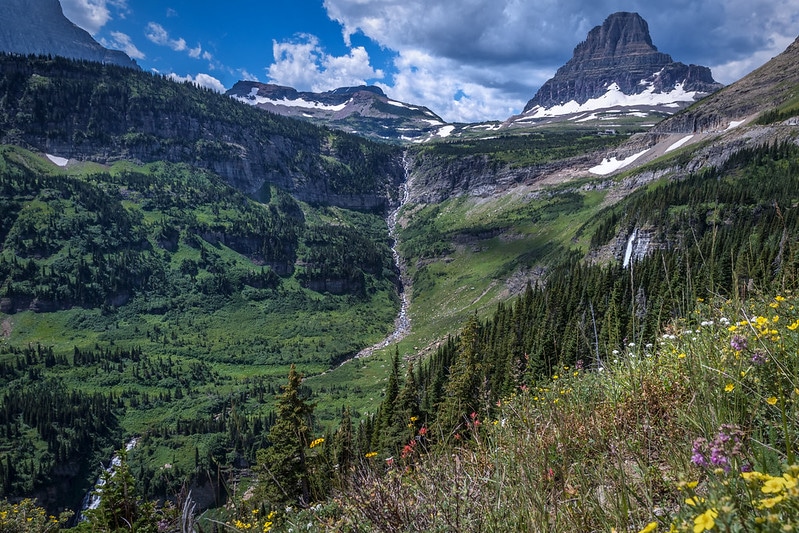The area of protected land on Earth has increased to seven times the size of India since 2010, according to a report released May 19 by the United Nations Environmental Programme (UNEP) and the International Union for Conservation of Nature (IUCN).
—
The addition of 2 million square kilometres (more than 770 000 square miles) brings the world tantalisingly close to meeting one of the goals set at the 2010 Convention on Biological Diversity conference held in Japan’s Aichi prefecture.
Inger Andersen, executive director of UNEP, called those gains “impressive.”
“We do need to congratulate the national governments for stretching and for getting so far,” Andersen said at a press conference. “But we also need to understand that there’s more to be done.”
The Protected Planet Report 2020 takes stock of measures taken to meet what’s known as Aichi Target 11, which called for protecting 17% of Earth ‘s land and 10% its marine environments by 2020. The report also lays the groundwork for a new framework aimed at protecting nature, which will be decided upon at the U.N. Biodiversity Conference, scheduled for October 2021 in Kunming, China.
You might also like: Lab-Grown Meat Company Receives USD$170m Investment to Scale Operations
The raw numbers tabulated in the report revealed that parks, preserves and other conservation-focused areas cover 16.64% of all land. The report’s authors say ongoing efforts to identify all of the land that’s currently conserved or managed privately or by Indigenous and local communities will almost certainly be enough to push that proportion past the 17% goal in Aichi Target 11.
But although protected area coverage in the oceans has more than tripled since 2010, to 28.1 million square kilometres (nearly 11 million square miles), it falls short of safeguarding 10% of marine environments worldwide.
The report also notes that some protected areas do a better job of protecting biodiversity and critical ecological regions than others.
“It’s not enough putting up a fence,” Andersen said. “We also need to ensure that the quality is up to standard.”
She noted that protected areas are crucial pieces in the global climate puzzle, given that they hold about a fifth of the land’s sequestered carbon. And a 2019 report by the Intergovernmental Science-Policy Platform on Biodiversity and Ecosystem Services has shown that, even as progress was made toward the goal of increasing protected area coverage, biodiversity has continued to decline worldwide, with around 1 million species threatened with extinction.
On both land and at sea, more than half of ecosystem types — vital repositories of unique species in many cases — don’t meet the thresholds for protected area coverage laid out in Aichi Target 11.
“The headline message here is that the quality elements of the target have made much slower progress than the quantity elements,” Neville Ash, the director of UNEP World Conservation Monitoring Centre, said during the press conference. “Not all protected and conserved areas are effective.”
On land, links between conserved areas are rare, with less than 8% of Earth’s surface qualifying as “protected and connected.” Research for the report also surfaced concerns about the data used to assess the effective management of protected areas and “other effective area-based conservation measures,” or OECMs. The report also reveals that conservation measures need to be more inclusive and to place less of a disproportionate burden on poor communities. This remains the case, despite decades of research showing that management by Indigenous and local communities often helps maintain healthier ecosystems than traditional protected areas.
“We must ensure that protected and conserved areas are at the right places, well-managed and equitably governed,” Bruno Oberle, director-general of the IUCN, said at the press conference.
Elizabeth Maruma Mrema, executive secretary of the UN’s Convention on Biological Diversity, said the past decade has revealed there aren’t adequate monitoring mechanisms for assessing protections for land and water.
The panel also acknowledged that none of the 20 Aichi targets were met in full. But Mrema said getting to 17% protection coverage on land should be encouraging, even if it was only part of the Target 11 goal.
“A key lesson coming from the strategic plan is that, if we take action, then we deliver,” she said. “We can do it, and we’ve done it.”
Featured image by: Flickr
This article was originally published on Mongabay, written by John C. Cannon, and is republished here as part of an editorial partnership with Earth.Org.


















